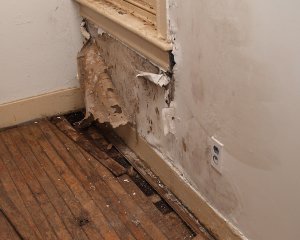Your Home's Most Common Triggers of Leakage: In-Depth Analysis
Your Home's Most Common Triggers of Leakage: In-Depth Analysis
Blog Article
We've discovered this great article pertaining to Common Water Leaks In House down the page on the web and think it made good sense to share it with you on this site.

Leakages not just trigger waste of water yet can additionally cause unnecessary damages to your residence and also advertise undesirable organic growth. Sadly, water leakages may go undetected given that a lot of the pipework in our home is hidden. By recognizing as well as looking for everyday scenarios that cause leaks, you can safeguard your house from future leaks as well as unnecessary damages. Today, we will certainly check out 6 leak causes that might be triggering your pipes to trickle.
Intruding roots
The majority of water leaks start outside the house instead than inside it. You might see damp patches or sinkholes in your lawn, and that might suggest that tree roots are invading water lines creating water to seep out.
Rusty water systems
As time passes by, your plumbing system ages as well as deterioration such as corrosion may start eating away the pipes. This might be the source of staining or warping on your water pipes. This asks for an assessment with your plumber instantly. Take into consideration changing the pipelines since they are at a greater risk of rust than the newer versions if our plumbing system is old.
Malfunctioning Pipe Joints
The point at which your pipelines link is often the weakest web link in the waterline. Pipe joints can degrade gradually, leading to water leakages. The majority of pipe joints are not easily noticeable. If you have noisy pipes that make ticking or banging sounds, especially when the warm water is activated, your pipeline joints are most likely under a lot of stress. It is advisable to have your plumber evaluate your system yearly.
Instantaneous temperature adjustments.
Severe temperature level modifications in our pipelines can cause them to broaden and also acquire suddenly. This expansion as well as contraction might cause splits in the pipes, particularly if the temperature level are below freezing. It would be best if you watched on just how your plumbing functions. The visibility of the previously mentioned situations frequently indicates a high danger.
Poor Water Connectors
At times, a leakage can be caused by loose tubes and pipelines that supply your home appliances. In case of a water connections leakage, you might observe water running straight from the supply line or puddles around your appliances.
Blocked Drains
Clogged drains pipes may be frustrating and inconveniencing, however they can in some cases wind up triggering an overflow causing rupture pipelines. Maintain getting rid of any materials that may go down your drains that can clog them to stay clear of such troubles.
All the above are root causes of leaks yet not all water leaks arise from plumbing leakages; some leakages might come from roof covering leaks. All leakages ought to be fixed right away to avoid water damages.
Leaks not only trigger waste of water however can additionally trigger unnecessary damage to your residence as well as advertise unwanted organic growth. By looking and also comprehending for daily scenarios that create leakages, you can shield your residence from future leakages as well as unnecessary damages. Today, we will look at six leakage triggers that may be causing your pipelines to drip.
At times, a leakage can be created by loose hoses as well as pipes that provide your appliances. In situation of a water links leakage, you might notice water running straight from the supply line or pools around your devices.
How To Check For Water Leak In Your Home
How To Check for Leaks
The average household's leaks can account for nearly 10,000 gallons of water wasted every year and ten percent of homes have leaks that waste 90 gallons or more per day. Common types of leaks found in the home are worn toilet flappers, dripping faucets, and other leaking valves. These types of leaks are often easy to fix, requiring only a few tools and hardware that can pay for themselves in water savings. Fixing easily corrected household water leaks can save homeowners about 10 percent on their water bills.
To check for leaks in your home, you first need to determine whether you're wasting water and then identify the source of the leak. Here are some tips for finding leaks:
Take a look at your water usage during a colder month, such as January or February. If a family of four exceeds 12,000 gallons per month, there are serious leaks.
Check your water meter before and after a two-hour period when no water is being used. If the meter changes at all, you probably have a leak.
Identify toilet leaks by placing a drop of food coloring in the toilet tank. If any color shows up in the bowl after 10 minutes, you have a leak. (Be sure to flush immediately after the experiment to avoid staining the tank.)
Examine faucet gaskets and pipe fittings for any water on the outside of the pipe to check for surface leaks.
Undetected water leaks can happen without the home or business owner even realizing. If you suspect a water leak, but not able to find the source. It is time to contact a professional water leak detection service, The Leak Doctor.
How To Find a Water Leak In Your Home
https://www.leakdoctor.com/blog/How-To-Check-For-Water-Leak-In-Your-Home_AE197.html

Do you appreciate reading about Common Water Leaks In House? Write a remark down the page. We would be interested to hear your ideas about this content. We hope to see you back again in the future. Loved our blog entry? Please share it. Help another person find it. We appreciate reading our article about How to Find Water Leaks.
Resolve today, dial! Report this page